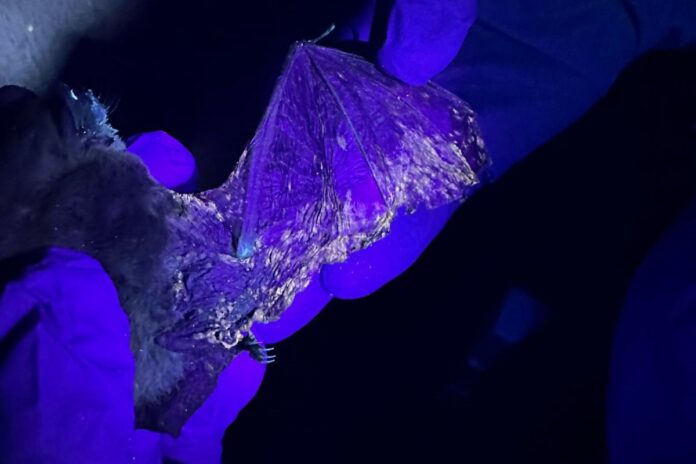A growing number of bats in the U.S. are becoming infected with a potentially deadly fungus, leading to warnings from experts and conservation groups of a potential devastation of America’s bat population.
White-nose syndrome (WNS), caused by Pseudogymnoascus destructans, was introduced to America in 2006 and has since killed more than 6 million bats. It grows on the flying rodents’ noses and wings and makes them use up their energy reserves at a much faster rate than usual.
The disease has been known to cause high death rates and population declines, in some cases wiping out entire bat colonies, according to the Bat Conservation Trust. A research paper in 2010 said the disease could cause a regional extinction of the little brown bat, one of the most common species in North America.
“The epidemic is considered the worst wildlife disease outbreak in North American history and shows no signs of slowing down,” said the Center for Biological Diversity, a Washington, D.C.–based lobby group. “It threatens to drive some bats extinct and could do real harm to the pest-killing services that bats provide.”
Colorado Parks & Wildlife
In the latest incident, a little brown bat was found infected with the fungus in the Colorado city of Longmont, which is north of Denver, on February 29.
The Colorado Parks and Wildlife (CPW) service said the bat had been discovered crawling along a public bike path, with brittle wings that prevented it from flying. Another bat suffering a similar condition was found in Boulder in mid-March.
Colorado parks officials said that while the fungus had been detected in little brown bat summer roosts in the state, as well as in a Yuma myotis bat in March last year, until now no little brown bats had been found sick with the disease.
“While it is unfortunate to discover this deadly disease in a second Colorado bat species, CPW did anticipate that this would happen based on what has been documented in other states,” Dan Neubaum, a CPW species conservation program manager, said in a statement on Monday.
The state agency said that at least 13 of Colorado’s 19 native bat species may be susceptible to WNS and that a large-scale loss would have a devastating economic effect. Given bats’ natural insect consumption, they contribute around $3 billion a year to U.S. agriculture, the CPW said.
The fungus first arrived in New York, likely from Europe, according to the National Park Service. Since then, monitoring by the Bat Conservation Trust suggests it has spread across 40 states and eight Canadian provinces, initially sweeping through the Northeast and the Appalachian Mountains before moving into New England and the mid-South.
From 2016 to 2018, WNS appears to have arrived in bat populations in the Great Lakes region and Oklahoma. Most recently, it has been recorded in Colorado, Idaho, Montana and Wyoming.
While WNS commonly spreads between bats and is not transmissible to humans, the Center for Biological Diversity said it was likely introduced to the U.S. by cave visitors who transported it on their caving gear or clothing.
The center also said humans may be partly responsible for its rapid spread across the U.S., having jumped suddenly from the Midwest to Washington state around 2016. To limit the spread, the center has petitioned for closing caves and abandoned mines on federal lands where bats roost.
Neubaum asked visitors to caves in Colorado to decontaminate their gear and urged members of the public not to handle sick bats but instead report them to the CPW.
Uncommon Knowledge
Newsweek is committed to challenging conventional wisdom and finding connections in the search for common ground.
Newsweek is committed to challenging conventional wisdom and finding connections in the search for common ground.


